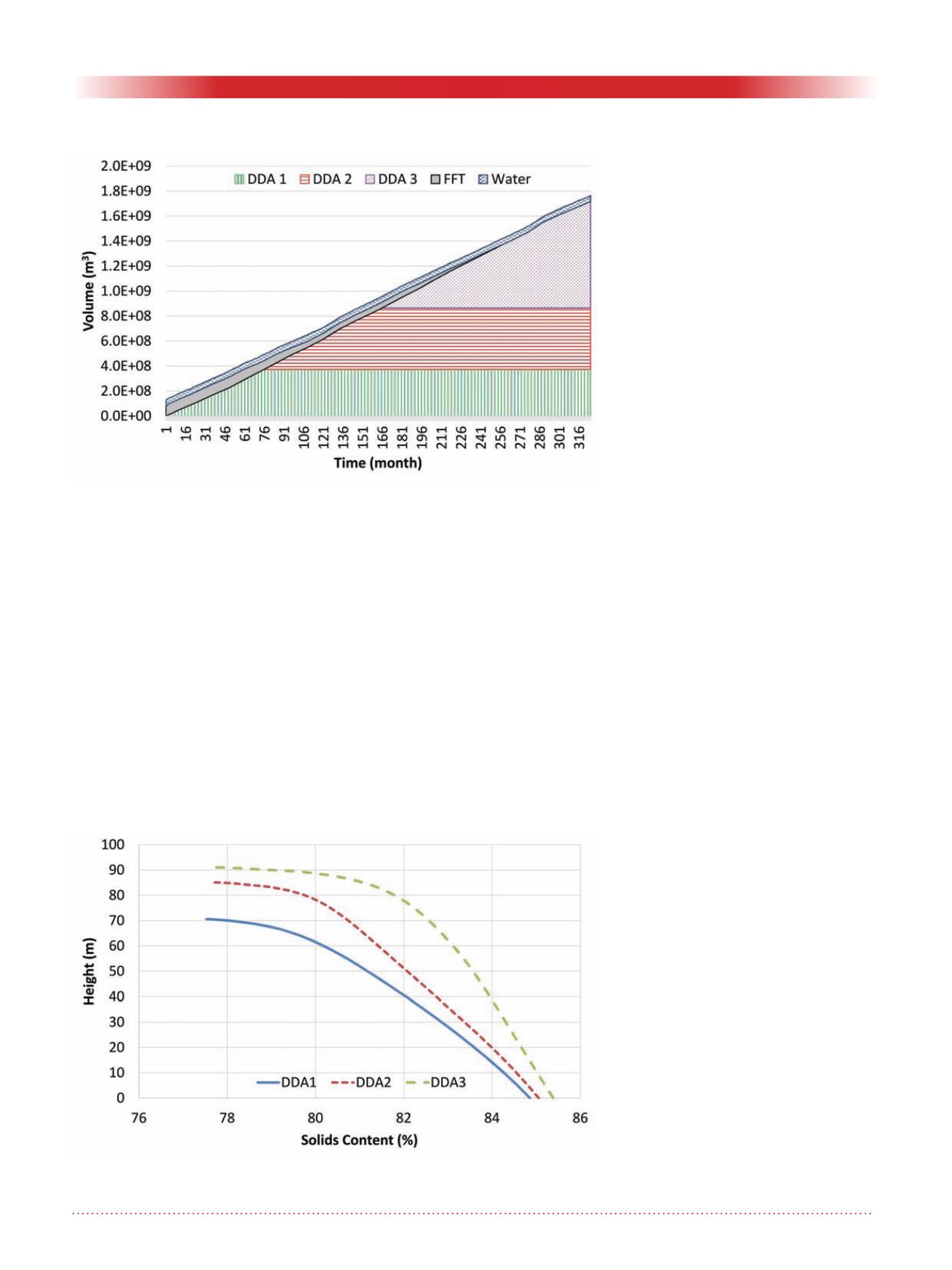
26
Geotechnical News •September 2015
WASTE GEOTECHNICS
Oil sands mine scenario
The base metal mine scenario demon-
strated that TMSim could reasonably
simulate a mine and tailings plan for a
simple case. These preliminary simu-
lations provided an analogue for an
external oil sands tailings facility with
deposition of FFT or thickened tailings
with dyke construction using coarse
tailings and/or overburden. However,
fine tuning of the initial model was
required to reflect the management
scheme and material flows at oil sands
operations (e.g. multiple depositional
impoundments both in- and out-of-
pit).
The TMSim model was expanded to
demonstrate the application of the
model for an oil sands mine. The
Syncrude Aurora North mine plan, as
presented in a Directive 074 tailings
management plan (Synrcude 2012),
was modeled using TMSim. The tail-
ings management technology imple-
mented was composite tailings (CT),
a method of blending fine grained
fluid tailings with coarse grained
cyclone underflow. All data utilized
in the simulation were collected from
publicly available sources of informa-
tion. A mass balance was completed
to ensure the calculated mass in the
various tailings deposits agreed with
expected results from the Syncrude
plan. The TMSim results were within
2% of the Syncrude plan; therefore,
the model mine plan assumptions and
UDFs incorporated into TMSim were
considered acceptable (Beier 2015).
Novel tailings dewatering
technology evaluation
To demonstrate the utility of the
TMSim model, a novel bench scale
tailings dewatering technology, cross
flow filtration (CFF), was evaluated.
CFF is a pressure-driven filtration
process that can be used for dewater-
ing slurries of fine particles and can
offer improvements over conventional
filtration. Details on the CFF pro-
cess for tailings dewatering can be
found in Beier et al. 2008, Ifill et al.
2010 and Zhang 2010. CFF offers an
opportunity to deposit tailings without
inducing segregation of the fines
from sand, thus preventing further
accumulation of FFT. It also provides
immediate recycle of process water
to the extraction plant. This reduces
the energy costs required for heating
process water, resulting in reduction
in Green House Gases associated with
the extraction process.
The CFF process can be implemented
in an oil sands mine to dewater
extraction tailings or coarse tailings
prior to deposition, thus negating the
formation and subsequent build up of
FFT. For typical extraction tailings at
~55% gravimetric solids content (Cw),
approximately 50% of the water must
be removed to bring Cw to at least
70-75% to prevent segregation (Beier
and Sego 2008). Upon dewatering to
70% or greater Cw, the CFF-tailings
could then be deposited as stacks
within the mined out pit. Sufficient
overburden material should be avail-
able to provide in pit containment
dykes for the CFF tailings.
Figure 4. Volume of the CFF tailings deposits, process water and FFT
requiring storage on site.
Figure 5. Gravimetric solids content profiles of CFF tailings in each DDA
immediately after filling.


